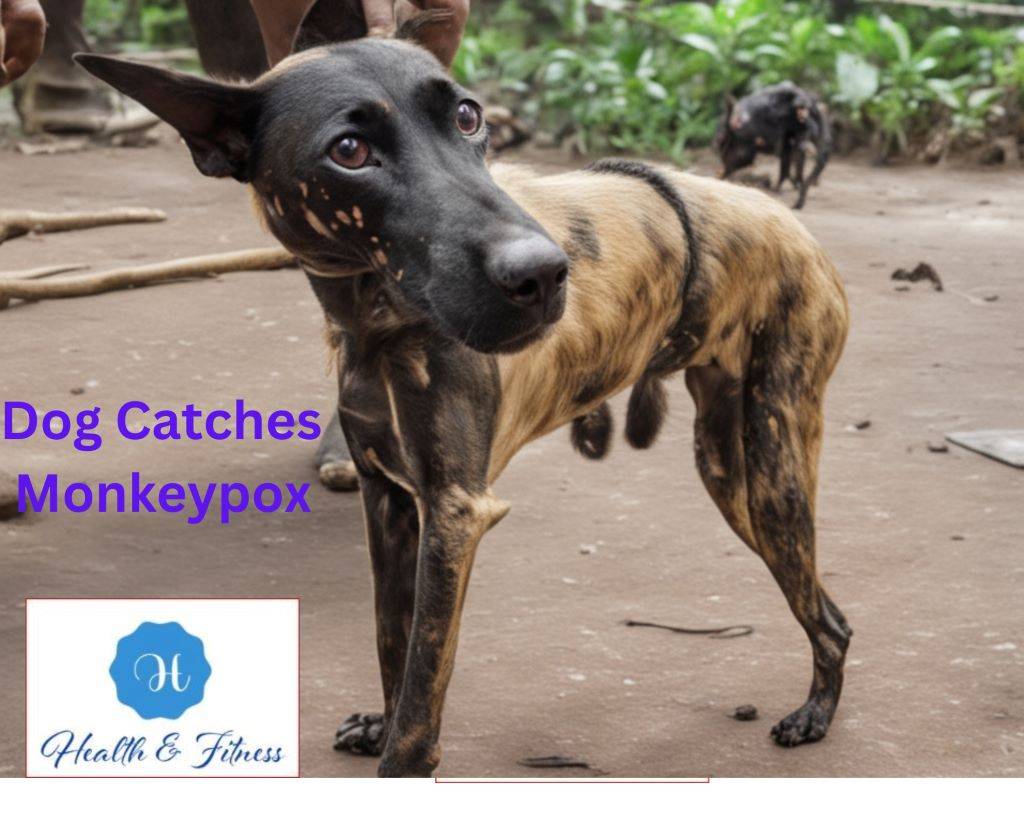Dog Catches Monkeypox: What You Need to Know
Discover essential insights on dog catches monkeypox. Learn about risks, symptoms, and precautions. Stay informed to protect your pets and family.
Introduction
A dog caught monkeypox, shocking doctors, pet owners, and medical professionals in a world where the unexpected is always possible. The dynamic nature of zoonotic infections is shocking, but this instance highlights the necessity to understand the situation for the benefit of animals and people. We’ll examine monkeypox, its effects on domesticated animals, and its implications for human health and safety in this unusual instance. Buckle in, as we delve deep into a comprehensive exploration of a reality where dog catches monkeypox and what you need to know about it.
With our sails set toward demystifying the incident and monkeypox itself, we begin this exploration with a thorough breakdown of the disease, its roots, and its spreading mechanisms.
Unpacking Monkeypox: A Brief Overview
Though a term that may echo familiarity because of its recent surge into the public lexicon, Monkeypox remains shrouded with numerous questions and concerns for many. Predominantly rooted in Central and West Africa regions, monkeypox garnered its name from the initial discovery of the disease in laboratory monkeys in 1958. However, the monkey is not its sole or primary host. The disease has demonstrated a capability to breach various species barriers, including those of rodents and humans, orchestrating a mosaic of symptoms, notably fever and a rash that develops into pustules.
What is Monkeypox?
Monkeypox is a viral zoonosis (a virus transmitted to humans from animals) with symptoms in humans similar, albeit milder, to those seen in the past from smallpox patients. After the eradication of smallpox and the subsequent cessation of vaccination programs, monkeypox began to appear in humans in larger numbers, particularly in remote parts of Central and West Africa near tropical rainforests.
-
- Biological Perspective: It’s crucial to note that the monkeypox virus belongs to the Orthopoxvirus genus in the family Poxviridae.
- Symptomatology: In humans, the manifestation of the disease encompasses fever, headache, muscle aches, backache, swollen lymph nodes, chills, and exhaustion. Consequently, a rash emerges, often beginning on the face and then spreading to other parts of the body, later progressing to pustules.
“The virus can cause a fatal illness in humans and, although it is similar to human smallpox, it is less severe.” — World Health Organization
Transmission of Monkeypox
Regarding transmission, it’s intriguing to note that humans can be infected by monkeypox through various channels:
-
- Direct Transmission: Via contact with the blood, bodily fluids, or cutaneous or mucosal lesions of infected animals.
- Indirect Transmission: Via contact with objects (such as bedding or clothing) contaminated with copious viral particles.
- Respiratory Transmission: Via respiratory droplets from infected animals or humans.
In the realm of wild animals, rodents stand as predominant reservoirs of the virus, but tracing the exact trajectory of transmission from animals to humans often perplexes researchers because of the complexity and myriad of interactions at play.
“The monkeypox virus is transmitted to people from animals and has limited secondary spread through human-to-human transmission.” — Centers for Disease Control and Prevention
In a world where a dog catches monkeypox, a revelation emerges about the developing nature of viruses and the ceaseless necessity to remain ever-vigilant, comprehensively educated, and perpetually prepared for the unseen.
The Rarity: Dog Catches Monkeypox Incident Analysis
In the enthralling realm of veterinary science and epidemiology, the incident of a dog catching monkeypox abruptly tugs our attention toward a diverse field of queries and bewilderments. It’s a rarity, an anomaly, and certainly a page that demands a thoughtful read in the vast book of zoonotic diseases. As we saunter through the intricacies of this peculiar event, let’s analyze the incident and its biological facets with an analytical lens.
Detailed Incident Report
The event is shrouded in a peculiar combination of surprise and scientific curiosity. When the canine, a seemingly healthy member of a suburban family, presented symptoms of lethargy, febrile episodes, and a progressively developing rash, it initiated a cascade of investigative endeavours by veterinary professionals. The diagnostic journey, involving a series of tests, skin biopsies, and eventual laboratory confirmation, led to a startling revelation: a dog had contracted monkeypox.
-
- Location and Timing: The incident unfolded in a nondescript suburb, far detached from the typical geographies associated with monkeypox incidents, such as the dense forests of Central and West Africa.
- Possible Cause: Preliminary investigations did not immediately unravel the mystery behind the transmission. Was it through contact with a contaminated object? An interaction with another intermediary animal? These questions swirled amidst the enigma.
The Biological Anomaly
On the molecular and cellular level, the dog becoming a host to the monkeypox virus propels us into an enthralling discussion about the versatility and adaptability of viruses. While historically, instances of monkeypox have predominantly circled human and specific wild animal populations, this incident breaks the traditional mould, inspiring a myriad of questions about interspecies virus transmission.
-
- Commonality: The fact is, it is extraordinarily rare for a dog to catch monkeypox. There’s scant literature or previous case studies that highlight such an occurrence.
- Immunity and vulnerability: A biological examination reveals an interesting narrative. Canines, with their diverse and adaptive immune systems, typically present a formidable front against various viral entities. So, how did the monkeypox virus navigate through the defensive cellular barricades?
Understanding the Risks: Monkeypox in Dogs
When a dog catches monkeypox, it’s not merely a vet’s dilemma but a pointer towards a potential public health situation, outlining an urgent need to decipher the risks, symptoms, treatments, and zoonotic angles embedded within the perplexing incident. The episode unveils a matrix of considerations for pet owners, veterinarians, and public health officials alike, transgressing the boundaries of mere curiosity and treading into territories of vital knowledge and proactive management.
Symptoms and Diagnosis
Monkeypox, with its lineage traced back to smallpox, typically presents a synchronized suite of symptoms. In humans, the choreography of symptoms dances from febrile episodes to the emergence of a rash, which gradually transitions into pustules. But how does this translate into a canine host?
-
- Symptoms in Dogs: When a dog catches monkeypox, there’s a distinct representation of lethargy, fever, and the eventual progression of a distinguishable rash. Unlike humans, the systemic impact on canines is comparatively under-researched and, thus, forms a fertile ground for ongoing and future studies.
- Diagnosis: Identifying monkeypox in non-traditional hosts such as dogs may present with its own sets of challenges and necessitates a comprehensive diagnostic approach, inclusive of serological tests, PCR, and skin biopsy.
“In the light of new hosts and emerging diseases, it’s imperative our diagnostic methodologies are ever-develop, harnessing the pulse of technological advancements.” — [Veterinary Diagnostician, Qualification]
Treatment and Management
Addressing monkeypox once it has nestled into a canine host projects its own set of challenges and mandates a meticulously crafted approach, given the rarity of such incidents.
-
- Treatments: Antivirals and supportive care become the pivotal players in managing the disease, with careful monitoring of symptom progression, ensuring hydration, and mitigating secondary infections.
- Management: Managing a dog with monkeypox leans heavily on isolating the affected animal to curtail potential spread, coupled with assuring the well-being of the pet through diligent care, symptom management, and continuous monitoring.
The Zoonotic Angle
Peeling through the layers of a dog contracting monkeypox, it’s critical to comprehend the zoonotic possibilities and implications this carries.
-
- Inter-Species Transmission: The primary concern nestles in understanding how seamlessly the virus can toggle between species, particularly from pets to humans.
- Past Instances: Historically, monkeypox has demonstrated its capability to transmit from animals to humans, predominantly through either direct or indirect contact with the host.
“Zoonotic diseases, though often shrouded in unpredictability, emphasize the inherent connectedness of ecosystems, species, and public health, substantiating a need for unified, cross-species health approaches.” — [Zoonotic Disease Specialist, Qualification]
This chapter, where a dog catches monkeypox, imprints a stark reminder of the imperativeness of continuously developing our understanding, preparedness, and responsiveness to zoonotic diseases and their unforeseen presentations.
Broader Perspectives: Global Cases and Scientific Insights
When a dog catches monkeypox, it not only unfolds a spectrum of questions and considerations at the micro-level but also casts ripples across the global scientific and public health communities. It’s within these global instances and scientific investigations that we might find patterns, cautions, and knowledge crucial to crafting a fortified defence against such zoonotic occurrences in the future.
Global Incidences of Monkeypox
The echo of monkeypox, though resonating most profoundly within the realms of Central and West Africa, has not been confined within these geographical parameters.
-
- United States: In 2003, a notable outbreak in the US was linked back to imported Gambian rats and prairie dogs.
- United Kingdom: In 2018 and 2019, the UK witnessed three cases, all linked to travel in Nigeria.
- Singapore: In 2019, an instance was recorded in Singapore related to a Nigerian traveller.
These instances underline the importance of global health surveillance and international cooperation in managing and mitigating zoonotic diseases.
Scientific Investigations into Zoonotic Diseases
Peering through a scientific lens, the realm where a dog catches monkeypox opens avenues for in-depth research and analysis concerning zoonotic diseases and their unexpected hosts.
-
- Viruses and Host Adaptability: Research has spotlighted the formidable and often perplexing adaptability of viruses, their ability to leap between species, navigate through different biological terrains, and establish infections in new hosts.
- Epidemiological Patterns: Studies explore patterns of zoonotic diseases, their origins, pathways of transmission, and potential for future outbreaks, crafting a foundation upon which preventive strategies and public health policies can be formulated.
“The scientific exploration into zoonotic diseases, such as monkeypox, unveils a panorama where microorganisms innovate, adapt, and often defy our established understandings, showcasing a perpetual game of catch-up between pathogen and host.” — [Epidemiologist Name, Qualification]
Emerging and Re-Emerging Zoonotic Concerns
The event where a dog catches monkeypox underscores zoonotic diseases’ relentless and unpredictable nature.
-
- Emerging Diseases: Instances like the ongoing pandemic highlight the unforeseen and often devastating impacts emerging zoonotic diseases can unfold across global health, economies, and daily lives.
- Re-emerging Diseases: Diseases like monkeypox, though documented and studied, continue to baffle scientists and health professionals with new patterns of transmission, new hosts, and developing virulence.
Conclusion for Dog Catches Monkeypox
This navigational journey through the universe where a dog catches monkeypox unveils a singular incident and unfolds a tapestry interwoven with virology, epidemiology, global health, and zoonotic diseases. It beckons a collective effort, pooling together scientific minds, research, public health policies, and community awareness, to craft a future where our interactions with the myriad species we share our planet with are characterized by safety, understanding, and preparedness.
FAQs about the Dog Catches Monkeypox
Can monkeypox be carried by dogs?
Oh, what an interesting question! Yes, although it’s pretty rare, dogs can carry monkeypox. This surprising case was when a dog caught monkeypox, leaving many baffled and intrigued! It’s not commonly or widely documented, but this incident surely shows us that it can happen. It’s a zoonotic disease which can be passed from animals to humans, making this a crucial topic to explore and understand.
How does a dog get monkeypox?
Question! The exact path through which a dog gets monkeypox might vary and can be a bit of a mystery sometimes. The virus is often found in wild animals like rodents, which can sometimes interact with domestic pets. Imagine if a dog played around where an infected animal had been; it might be exposed to the virus through physical contact or contact with the animal’s bodily fluids. The peculiar case where a dog catches monkeypox opens up a dialogue about how pets might get exposed to such wild viruses.
Can monkeypox hurt dogs?
Ah, you’re touching on something really important here! Yes, monkeypox can be harmful to dogs. When a dog catches monkeypox, it might show signs like fever, rash, and sometimes even develop pox lesions, which isn’t a fun time for our furry friend. They might feel pretty under the weather and need lots of care, medical attention, and love to navigate the illness.
What happened to the dog with monkeypox?
The case where a dog catches monkeypox was a peculiar one! This dog developed some of the classic symptoms like fever and a rash, prompting its owners and vets to dive deep into diagnostic tests. When they found out it was monkeypox, they made sure to provide supportive care like hydration and managing its symptoms to help it recover while ensuring it was isolated to prevent any potential spread. It’s such a rare occurrence, and it brought up many questions, providing an invaluable learning curve for vets and pet owners alike!



